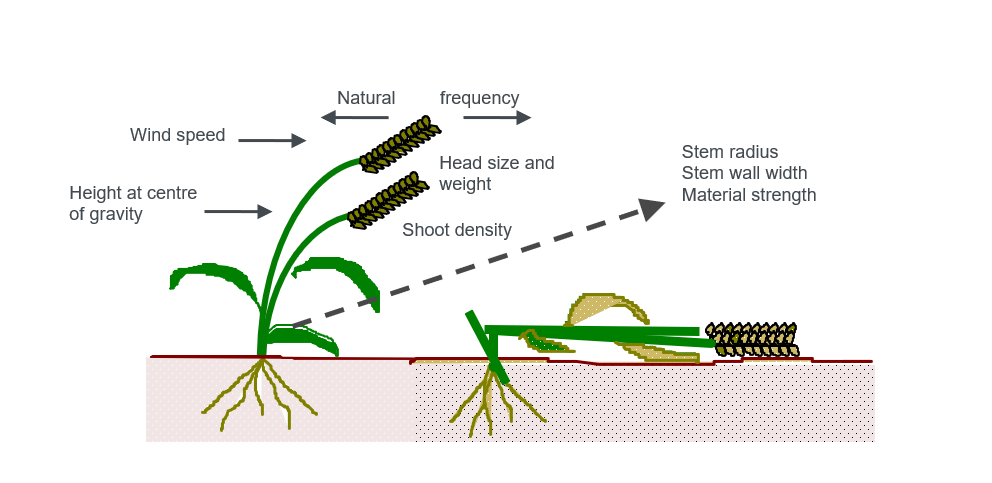Australian Hay Update – Monday 26th June
The 2023/24 growing season for Australian Oaten Hay is well underway and despite the concerns with a drier season for cereal crops, less moisture, particularly at the end of the hay growing season produces a far better product to suit the dairy and livestock industries. In this month’s report, we will explain the reasons why less rainfall can actually benefit an oaten hay crop.
Fibre Length and Thickness:
Too much moisture during the growth cycle of an oaten hay crop will produce thicker stems and longer fibre lengths which reduces the feed test value. This is due to the nutrients of the plant being spread across a larger fibre length diluting the high levels of water soluble carbohydrates (sugar content important for palatability) and increasing the acid and neutral detergent fibres leading towards poor fibre digestion and absorption rates.
Lodging:
Lodging is defined as the permanent displacement of a stem from a vertical posture. It is often caused by high wind speeds, made worse by wet conditions. It can happen quickly or relatively slowly, with stems initially leaning then falling under the pressure. If too much water is received on an oaten hay crop, the plant may grow beyond a stable position and fall over. This is because the root system of the plant has not penetrated deeply enough through the soil as it has not had to search too far for moisture. The plant falls and then regrows which renders the crop unusable due to soil contamination.

Harvesting:
A drier season and reduced rainfall can facilitate the oaten hay harvesting process. When there is less rainfall, the hay can dry faster in the field, allowing for earlier cutting and baling while maintaining the crop quality. This is crucial as excessive moisture in the hay can lead to mould and spoilage, reducing its quality and market value. If hay is baled above an acceptable level (14% Export Standard / 18% Domestic Standard) then heat pockets may be prevalent leading to internal combustion and result in a hay stack or shed catching fire.
Quality:
Oaten hay is valued for its high nutritional content and suitability as livestock feed. When hay is harvested in drier conditions, it tends to have a lower moisture content, resulting in better preservation of its nutritional value. Hay baled with lower moisture levels is less prone to spoilage, maintaining its quality and nutritional composition for longer periods. When baling, a drier crop will pack more densely leading to higher bale weight, less shrinkage and a more efficient storage life.

Field Management:
Less rainfall reduces soil moisture, which can be advantageous for oaten hay crops. The drier conditions make it easier to manage field operations such as irrigation, fertilisation, and weed control. Farmers have more control over the amount of water supplied to the crop, preventing excessive moisture that could lead to root rot or other fungal diseases.
Reduced Disease Pressure:
Certain diseases and pathogens thrive in wet conditions. With lower rainfall, there is typically a decrease in the prevalence of diseases that affect oaten hay crops. Fungal diseases, such as rust or leaf spot, are less likely to develop and spread in drier conditions. This can result in healthier crops and higher yields.

It’s important to note that while less rainfall can have benefits for oaten hay crops, the absence of rainfall altogether or prolonged drought conditions can be detrimental. Adequate moisture is still necessary for plant growth and productivity, so a balance is required to ensure optimal crop development.
The 2023/24 oaten hay season is off to its best start for a number of years and with improved long haul freight rates, it is expected that products destined for the Middle East will be in strong demand. The team at Basis Commodities is available to discuss fodder requirements and also to support our clients with technical information. Our close association with BALCO Australia will ensure the appropriate information is shared to nutritionists and the livestock output is at the optimal levels.
Please follow the link and enjoy this video detailing the support from Basis Commodities and BALCO Australia.
Please contact Nader Hassan or Steven Foote, who are available to support any fodder needs for the season.
Steven Foote
Sydney, Australia
M:
0408 308 908
E:
steven@basiscommodities.com
Nader Hassan
Dubai, UAE
M:
+971566915688
E:
nader@basiscommodities.com
Sign up for our mailing list.
If you’d like to be added to our mailing list and receive these updates direct to your inbox each month, email info@basiscommodities.com with your name and email address.
The post Basis Commodities – Australian Hay Update – Monday 26th June appeared first on Basis Commodities.
Share This Article
Other articles you may like
Sign Up
Enter your email address below to sign up to the Basis Commodities newsletter.








